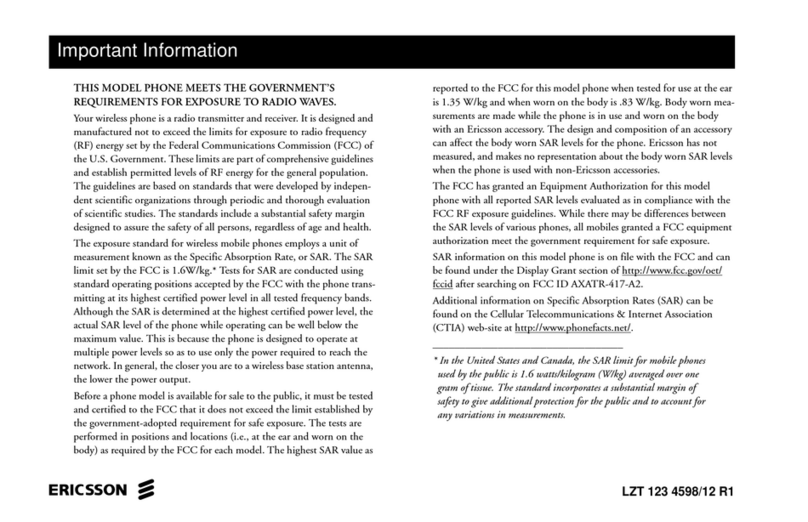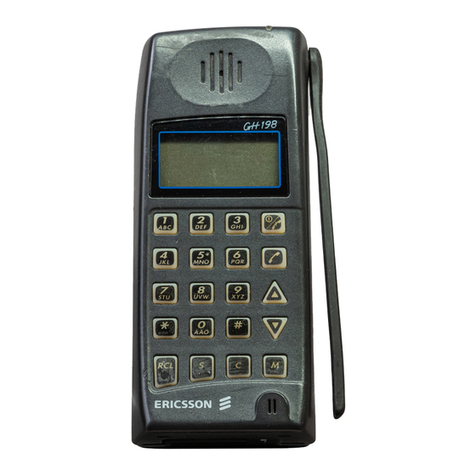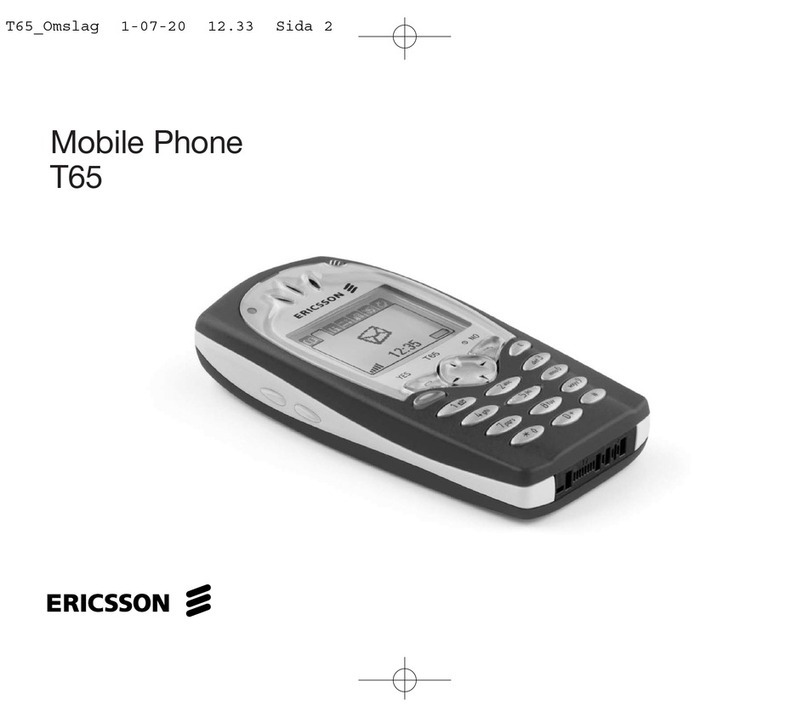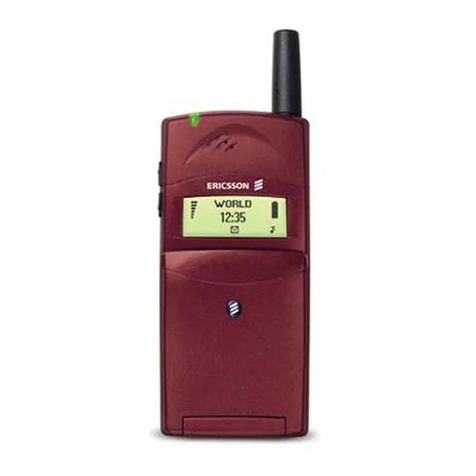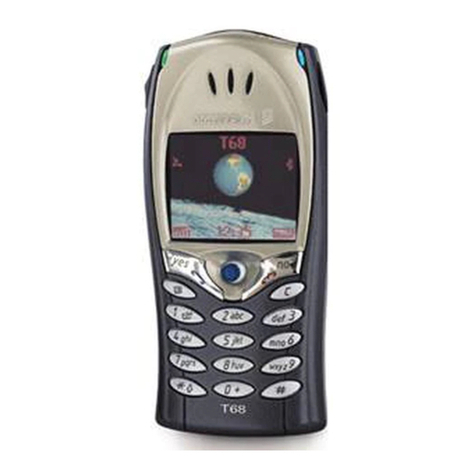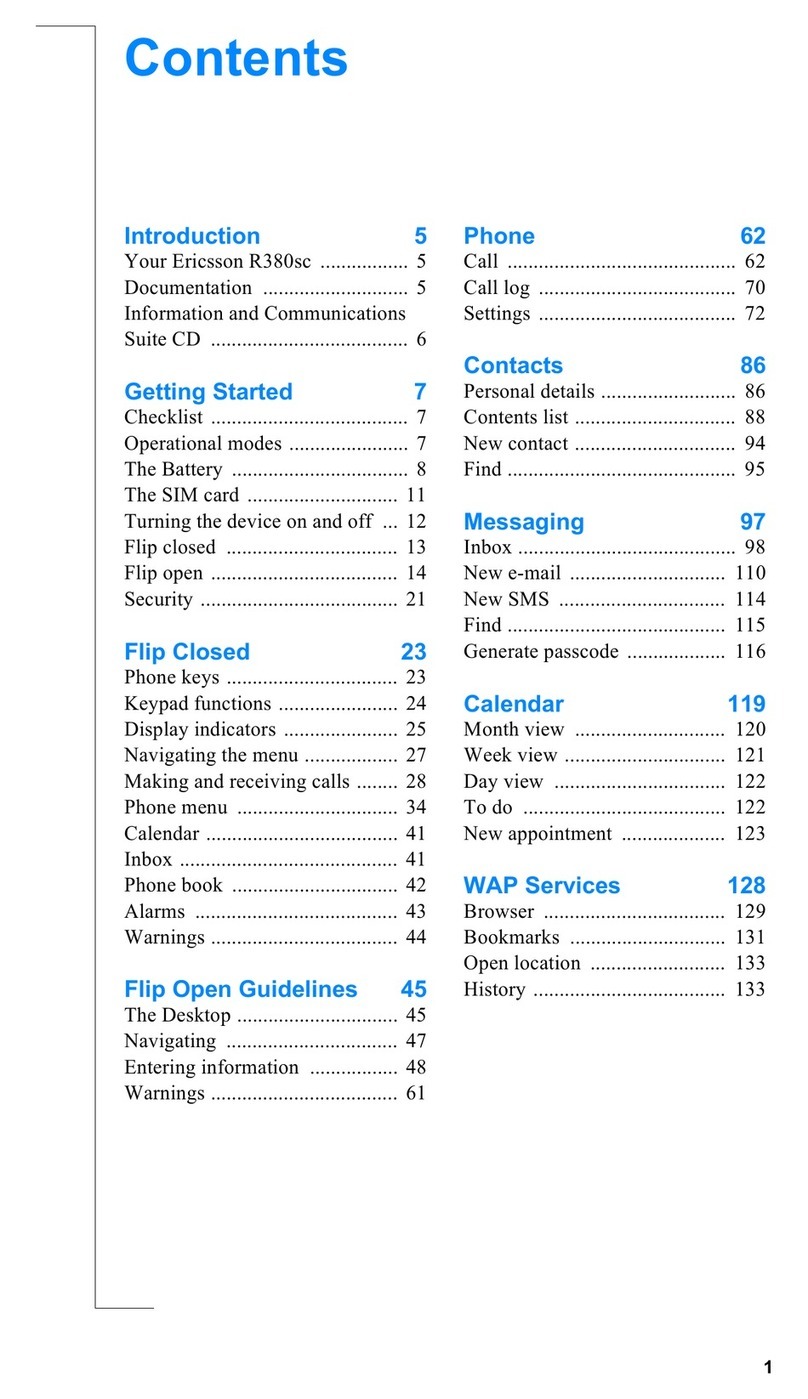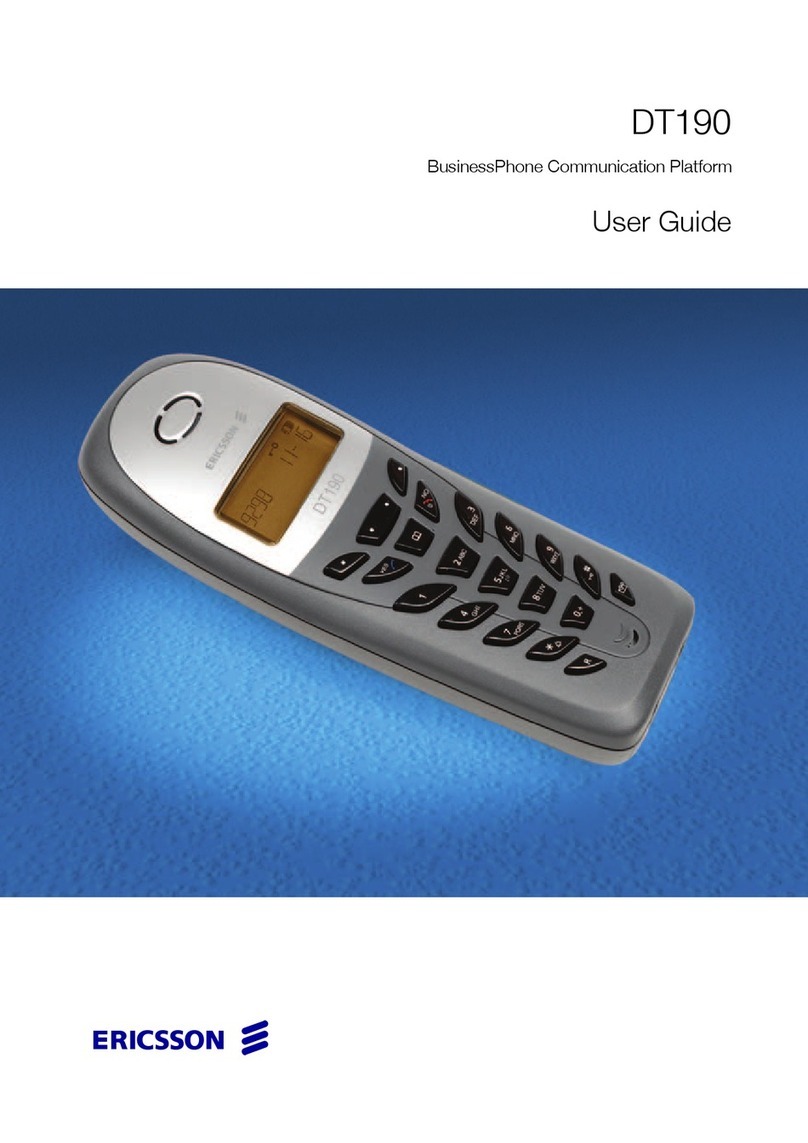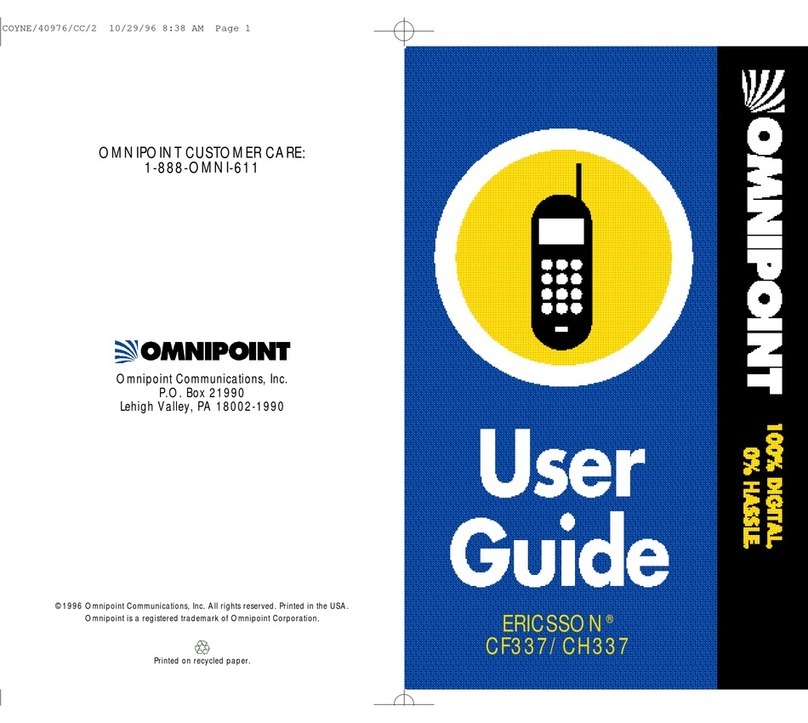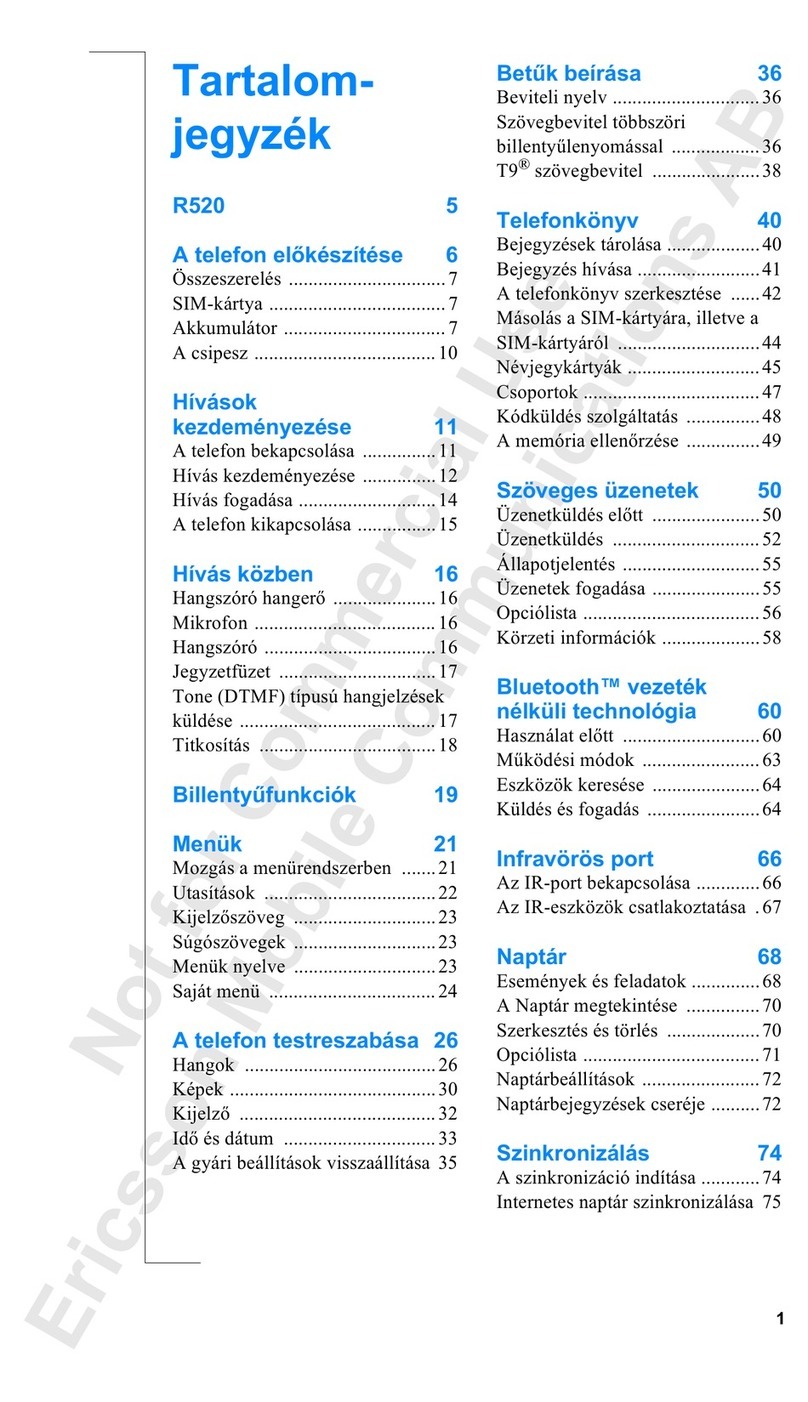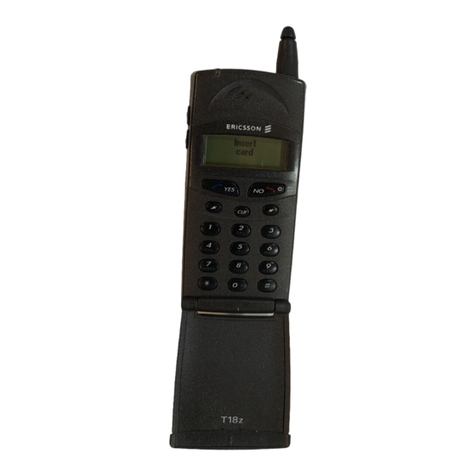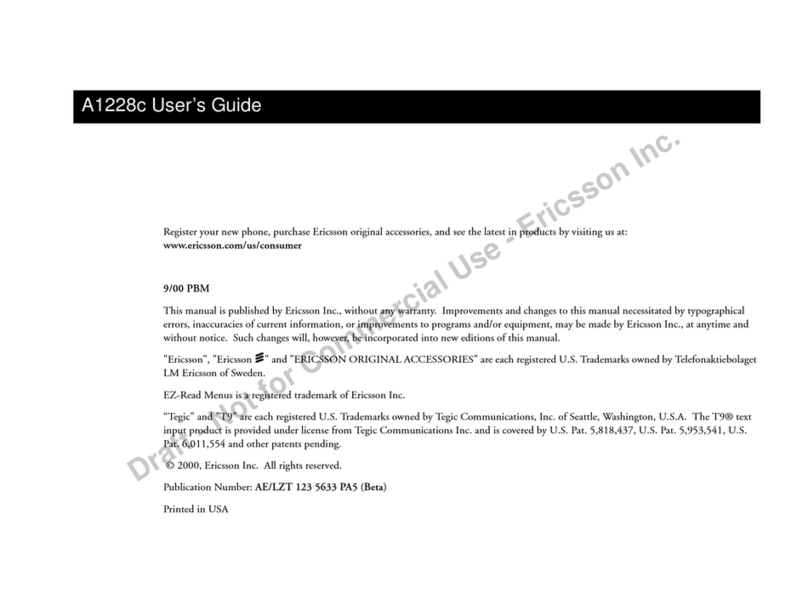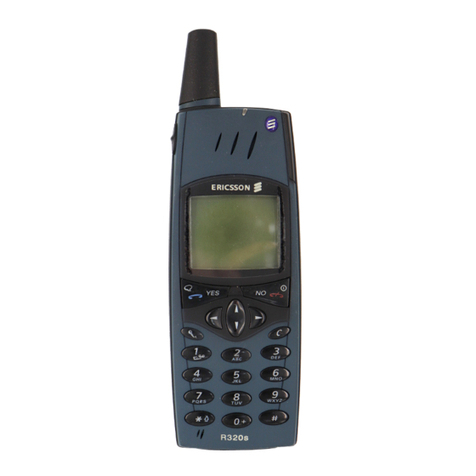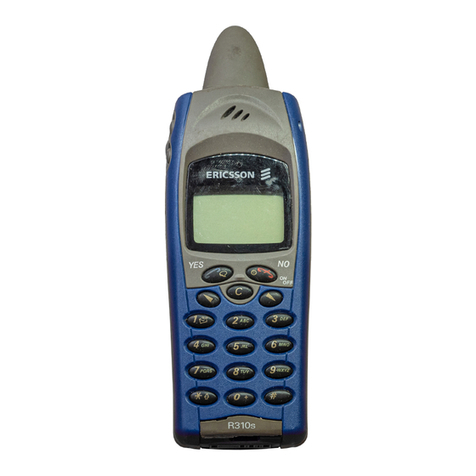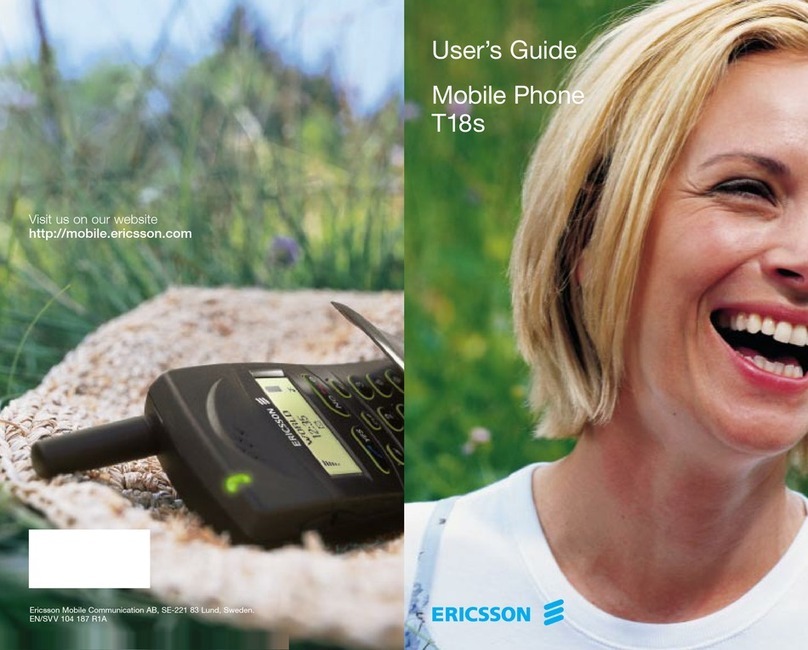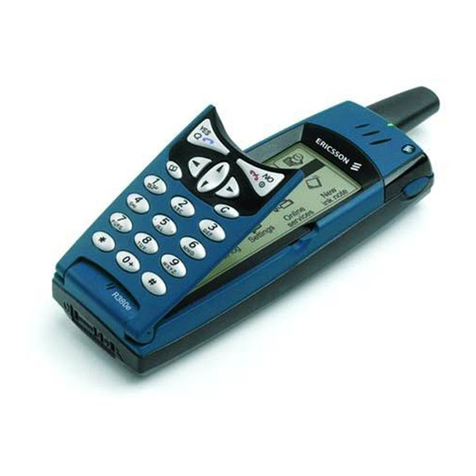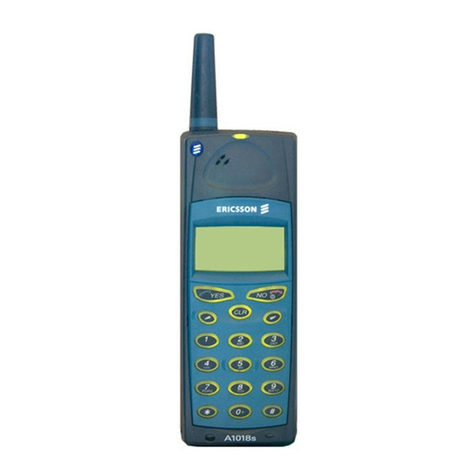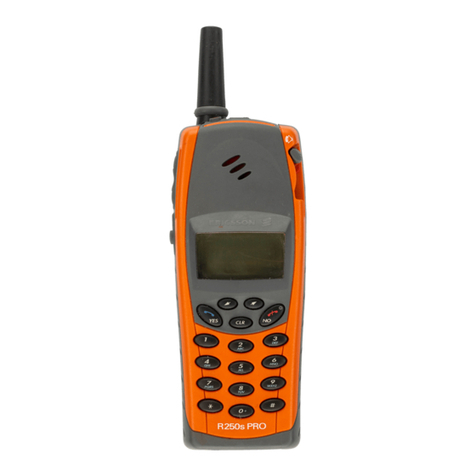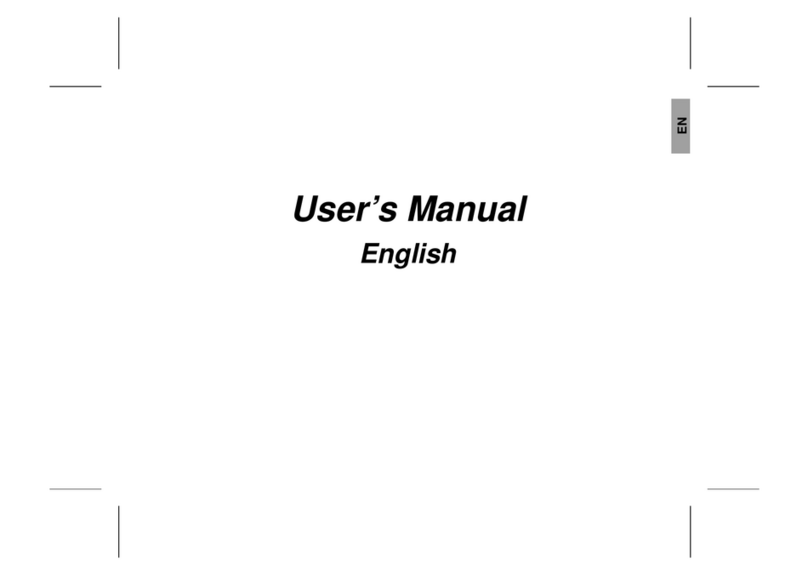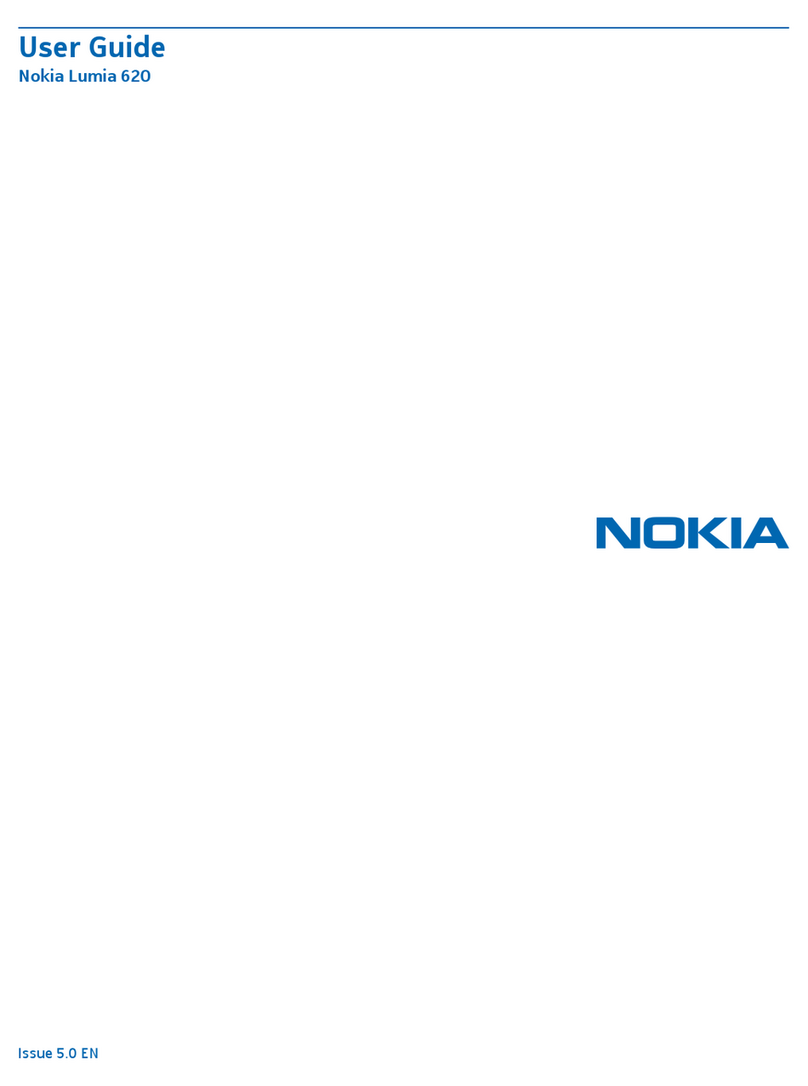
Standard Trouble Shooting Instructions
4/00021-2/FEA 209 544/18 D 6(35)
2 Network problems
2.1 Find out if the fault is RX or TX related
Connect the phone, with the signalling program, to a GSM test instrument and try to get serv at -
68,5 dbm signal strength.
If the phone gets serv, go to the section 2.1.2.
If the phone does not get serv, the fault probably is dependent on the LO part,
or the losses in the signal path are too great, go to section 2.1.1.
2.1.1 The phone does not get SERV
Disassemble the phone and check for liquid damage.
No further action should be taken for a liquid damaged telephone.
Check visually the antenna connector X101, checks if it is damaged, bad soldered or dirty.
If necessary, replace X101.
Check for bad soldering at C314, C318, C319, N301, N302 and N303.
Measure the resistance and replace the faulty component of C530, C531, C532, C533, C534 and
C535, all >200 kohms.
Measure the resistance and replace the faulty component of
C850>100 kohms, C851>1kohm, C833>1kohm, C853>100kohms.
Check for bad soldering at Z250, Z500, Z201 GSM900, Z202 GSM1800 and Z205.
Give the board power and start it up.
• Measure VRAD (3,8V) at C433.
If the voltage is incorrect, go to the section On/ Off problems.
• Measure the DC voltage at N303 pin4 and pin6.
Pin 4 = variable control voltage between 0,8-2,8V (usually 1,7V at the start).
Pin 6 = variable feed voltage (3,3V usually at the start of the board).
If N303 pin 6, the feed voltage is too low or missing.
Check the soldering at D105, D103 and D600 pin8 and pin102.
Measure VVCO 3,8VDC at N410 pin5.
If not, replace N410.
If yes 3,8V at N410 pin 5, measure the level 3,8V at V305 pin 2.
If yes 3,8V at pin 2, replace V305 and C321.
If no 3,8V at pin 2, replace R301.
If N303 pin4, the control voltage is too high (3,6V).
Replace N301.
